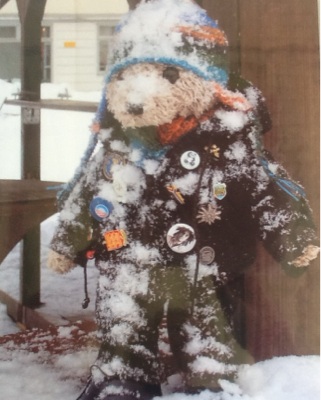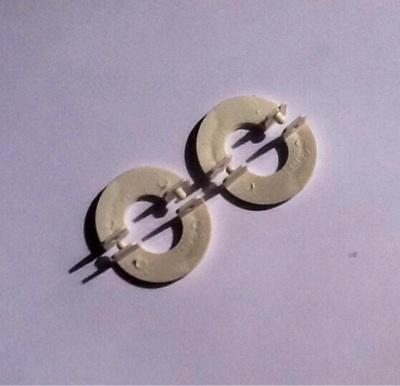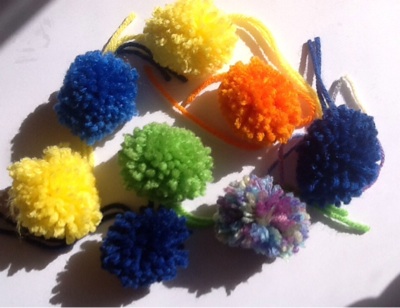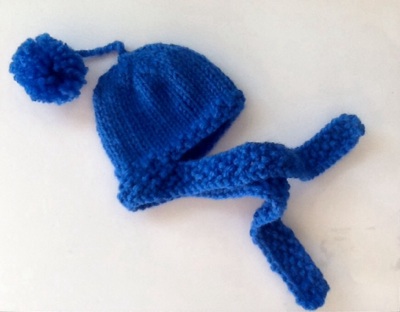And today I want to thank Tyana J LittleString for being such a good and faithful companion. If the Bears I knit for the Mother Bear Project have only some of the impact this bear has on me, it will be well worth knitting my fingers into a permanently bent position :)
December 6, 2010 - A Letter to Johann Wolfgang von Goethe
December 6 is the day on which St. Nikolaus used to stand at my childhood’s doorstep with nuts and apples and chocolate. My mother or my grandmother invited him inside. My cousin and I sang and recited poems to please him, and we shivered with fear, because outside, in the snow, stood his helper, Knecht Ruprecht, with a switch. Luckily the behaviour of three and five year olds is never bad enough to warrant the application of a switch to our backsides, but the threat loomed over us for weeks and months.
Thinking of Knecht Ruprecht makes me smile now; he was the one who was punished by having to stand in the freezing, dark December night. Ironic. And today, while I sip hot chocolate and watch the wisteria on my front porch fight with the wind, my thoughts, though drifting back to my childhood, also travel forward, to my upcoming trip. I cross off my list what has been accomplished – suitcase packed, bills paid, mail delivery halted, watchdogs’ teeth sharpened – and I tend to my final chores. But before I shop for batteries, copy names from my address book to my journal, secure transportation to the airport, I feel compelled to explain my travel companion Tyana, the teddy bear, to you, Herr Goethe. People stare at me sometimes. Am I stuck in child’s play? Am I a crazed person who conveys sinister thoughts to a stuffed animal? You never know!
Tyana has posed at the feet of Hans Sachs in Nürnberg and next to Hans Christian Andersen in Solvang. She has fallen off the castle wall in Dilsberg, and has sledded in Truckee. She has been photographed in the ruins of Ephesus and has entertained little girls in Jamaica. She has climbed the welcome sign in front of Emily Carr’s house in Victoria B.C. and the rocks of Abiquiu in search of Georgia O’Keeffe. I have dragged Tyana J LittleString over mountains and I have dragged her across restaurant tables. A picture in front of the twisted tree. Click! One more with the yummy chocolate cake. Click!
Childish substitution or an attempt to draw attention to myself? I hope to assure you, Herr Goethe, that it is neither, though Tyana is a stand-in and she gets noticed.
I travel alone; often I am in need of a “place marker.” A photograph of a monument would be just another travel shot, but having Tyana in the picture makes it my shot. Sometimes, to my embarrassment, she does cause people to pay attention. While walking along Hadrian’s Wall my reputation as the “bear lady” traveled ahead of me at times. Posing her in front of a maritime museum on Guernsey caused a small dog to bark at the top of his lungs. On Corfu I was asked if she eats ice cream.
Tyana has a large wardrobe – more than 100 outfits – and an even larger portfolio of eight by tens. She travels with her toys, wears boots in winter, but no, she does not eat ice cream.
So, that is the Sachverhalt, the way things are, Herr Goethe. My mother would have said, “Das ist des Pudel’s Kern.” She quoted you frequently. I wonder if she knew that Faust used the phrase when he realized that the black poodle, following him to his study, was Mephistopheles? I don’t like the translation into English, “So, this then, was the kernel of the brute.” Why the brute? Isn’t your devil smooth and well behaved?
Herr Goethe, if you see me walking the snowy streets of Weimar, camera in hand and a bear attached to my backpack, say hello. Help me find your Garden house by the Ilm and your big house am Frauenplan. The Elephant Hotel. The Bauhaus Museum. The Schiller Haus. The Cranach Haus. The Anna-Amalia Library. Hoffmann’s bookstore. And, of course, a good Café for the best afternoon sweets Weimar has to offer. I’ll treat.

Tyana, dressed as Santa, on my kitchen table in Weimar

Tyana, guarding a potato pancake in Weimar

It's snowing in Weimar

We are putting a rose in the snow in front of Herr Goethe's garden house.
















